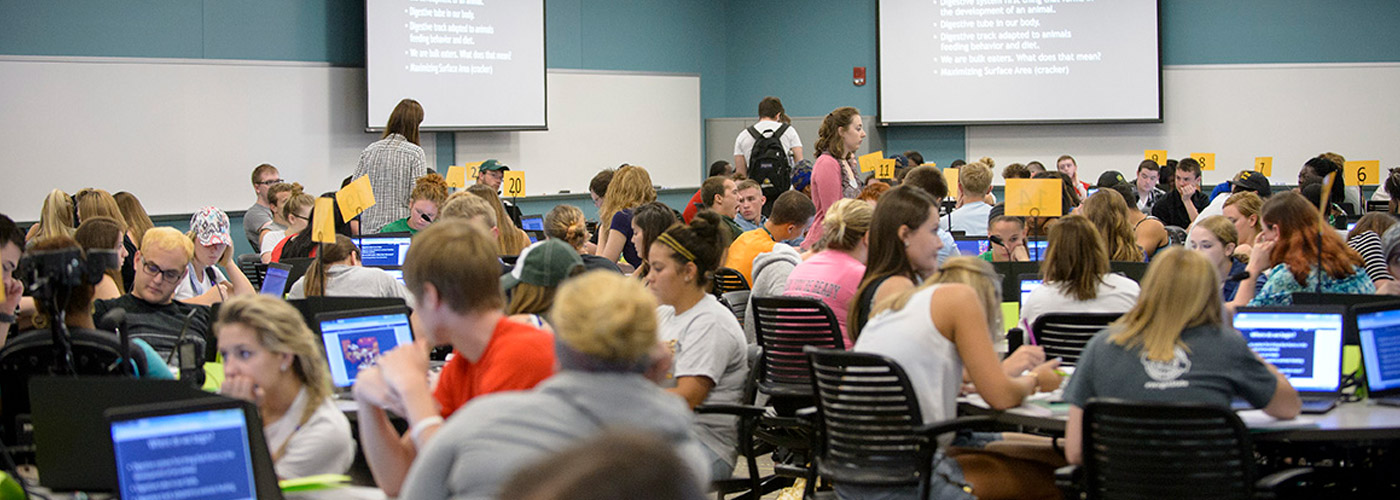Thursday April 25, 2024
Bills / Cases / IRS
Existing Tax Patent Invalid
FORT PROPERTIES, INC., Plaintiff-Appellee, v.
AMERICAN MASTER LEASE LLC, Defendant-Appellant.
UNITED STATES COURT OF APPEALS
FOR THE FEDERAL CIRCUIT
Appeal from the United States District Court for the Central District of California in case no. 07-CV-365,
Judge Andrew J. Guilford.
Decided: February 27, 2012
ARIANNA FRANKL, Cole, Schotz, Meisel, Forman & Leonard, P.A., of New York, New York, argued for plaintiff-appellee.
DONALD M. FALK, Mayer Brown, LLP, of Palo Alto, California, argued for defendant-appellant. With him on the brief were RITA K. LOMIO; and NEIL M. SOLTMAN, of Los Angeles, California. Of counsel was ANTHONY G. GRAHAM, LLP, Graham & Martin, LLP, of Costa Mesa, California.
Before PROST, SCHALL, and MOORE, Circuit Judges.
PROST, Circuit Judge.
Defendant-Appellant American Master Lease LLC ("AML") appeals from the decision of the United States District Court for the Central District of California to grant summary judgment in favor of Plaintiff-Appellee Fort Properties, Inc. ("Fort Properties"). In issuing this ruling, the district court invalidated all claims in U.S. Patent No. 6,292,788 ("'788 patent") for failing to meet the subject matter eligibility requirements of 35 U.S.C. § 101. We affirm.
I. BACKGROUND
The '788 patent discloses an investment tool designed to enable property owners to buy and sell properties without incurring tax liability. Proceeds generated from real estate sales are ordinarily taxed, with some exceptions. One such exception is contained in 26 U.S.C. § 1031, which allows an owner of investment property to exchange one property for another of like kind without incurring tax liability if the following conditions are met: (1) the value of the purchased property is greater than or equal to the value of the sold property; (2) the debt burdening the purchased property is greater than or equal to the debt burdening the sold property; (3) the purchased property is identified within 45 days of the sold property's date of sale, and the entire acquisition is completed within 180 days; and (4) the real estate owner does not exercise control over the proceeds from the sold property before acquiring the purchased property. See 26 U.S.C. § 1031.
The investment tool disclosed in the '788 patent is designed to invoke the benefits of § 1031. In particular, the claims require the aggregation of a number of properties into a "real estate portfolio." The property interests in this portfolio are then divided into shares and sold to investors much in the same way that a company sells stock. These divided property interests are called "deedshares."1 Each deedshare can be encumbered by its own mortgage debt, which provides flexibility to real estate investors attempting to structure their debts in a way that complies with § 1031.
The '788 patent also allows for a "master tenant" to oversee and manage the deed shares. Among other things, the master tenant performs administrative tasks such as paying insurance, property taxes, and rents. '788 patent col.7 ll.44-51. Moreover, the real estate portfolio can be governed by a "master agreement," which permits the deedshares to "reaggregate" after a predetermined time interval. This arrangement provides flexibility to deedshare owners wishing to sell their properties. Finally, the investment instrument disclosed in the '788 patent utilizes a "qualified intermediary" (essentially a straw man) to facilitate sales and purchases of deed shares for property owners in a manner consistent with 26 U.S.C. § 1031. See '788 patent col.10 ll.1-62.
All claims in the '788 patent are method claims. Claim 1 discloses:
1. A method of creating a real estate investment instrument adapted for performing tax-deferred exchanges comprising:
aggregating real property to form a real estate portfolio;
encumbering the property in the real estate portfolio with a master agreement; and
creating a plurality of deedshares by dividing title in the real estate portfolio into a plurality of tenant-in-common deeds of at least one predetermined denomination, each of the plurality of deedshares subject to a provision in the master agreement for reaggregating the plurality of tenant-in-common deeds after a specified interval.
Two of the other independent claims, claims 22 and 32, are nearly identical to claim 1 -- though claim 32 contains an additional limitation requiring a computer to "generate a plurality of deedshares." The only other independent claim in the '788 patent, claim 11, discloses a method of transferring ownership of deedshares in a manner consistent with 26 U.S.C. § 1031. Nearly all of the dependent claims in the '788 patent either outline contractual provisions to include in the master agreement or provide for duties that the master tenant can perform (e.g., the payment of rent, property taxes, and insurance, etc.).
The district court invalidated each of the forty-one claims in the '788 patent for failing to claim patent-eligible subject matter under 35 U.S.C. § 101. In doing so, the court applied the machine-or-transformation test. Regarding the machine prong, the court found that the claims of the '788 patent were not "tied to a particular machine or apparatus," reaching this conclusion by relying on AML's prior representation during prosecution that the recited methods "need not be performed by a computer." Fort Props., Inc. v. Am. Master Lease, LLC, 609 F. Supp. 2d 1052, 1055-56 (C.D. Cal. 2009) (internal quotation marks omitted). Regarding the transformation prong, the court found that "none of the claims of the '788 Patent 'transform[ed] any article to a different state or thing,'" reasoning that the claimed deedshares, which AML argued provided the transformation, "represent[ed] only legal ownership interests in property. . . . not physical objects." Id. at 1056. In light of its decision to invalidate the claims of the '788 patent, the district court granted summary judgment in favor of Fort Properties. Id.
Notably, the district court, following our precedent in In re Bilski, 545 F.3d 943 (Fed. Cir. 2008), relied solely on the machine-or-transformation test in its § 101 analysis. After the district court issued its decision, the Supreme Court clarified that the machine-or-transformation test, although not the exclusive test for patentability, is "a useful and important clue." Bilski v. Kappos, 130 S.Ct. 3218, 3227 (2010). Despite this intervening precedent, we affirm the district court's judgment invalidating the claims under § 101 for the reasons stated below. We have jurisdiction under 28 U.S.C. § 1295(a)(1).
II. DISCUSSION
We review the district court's grant of summary judgment de novo. Tokai Corp. v. Easton Enters., Inc., 632 F.3d 1358, 1366 (Fed. Cir. 2011). "Issues of patent-eligible subject matter are questions of law and are reviewed without deference." Cybersource Corp. v. Retail Decisions, Inc., 654 F.3d 1366, 1369 (Fed. Cir. 2011).
The statute sets forth the categories of patent-eligible subject matter, stating that "[w]hoever invents or discovers any new and useful process, machine, manufacture, or composition of matter, or any new and useful improvement thereof, may obtain a patent therefor, subject to the conditions and requirements of this title." 35 U.S.C. § 101. "Section 101 thus specifies four independent categories of inventions or discoveries that are eligible for protection: processes, machines, manufactures, and compositions of matter." Bilski, 130 S.Ct. at 3225. "In choosing such expansive terms . . . Congress plainly contemplated that the patent laws would be given wide scope." Diamond v. Chakrabarty, 447 U.S. 303, 308 (1980). Supreme Court precedent, however, has "provide[d] three specific exceptions to § 101's broad patent-eligibility principles: 'laws of nature, physical phenomena, and abstract ideas.'" Bilski, 130 S.Ct. at 3225 (quoting Chakrabarty, 447 U.S. at 309). "The concepts covered by these exceptions are 'part of the storehouse of knowledge of all men . . . free to all men and reserved exclusively to none.'" Bilski, 130 S.Ct. at 3225 (quoting Funk Bros. Seed Co. v. Kalo Inoculant Co., 333 U.S. 127, 130 (1948)).
At issue in the present case is whether the real estate investment tool disclosed in the '788 patent falls under the "process" category of § 101. Section 100(b) of the Patent Act defines "process" to mean "process, art, or method, and includes a new use of a known process, machine, manufacture, composition of matter, or material." AML argues that its invention constitutes a patent-eligible process. Fort Properties, on the other hand, contends that the invention is an unpatentable abstract idea.
Four seminal Supreme Court precedents provide guidance regarding when an invention qualifies as a patent-eligible process as opposed to an abstract idea: Bilski, 130 S.Ct. 3218; Diamond v. Diehr, 450 U.S. 175 (1981); Parker v. Flook, 437 U.S. 584 (1978); and Gottschalk v. Benson, 409 U.S. 63 (1972). First, in Benson, the Court found that an algorithm capable of converting binary-coded decimal numerals into pure binary code was an unpatentable abstract idea. 409 U.S. at 64-67, 71-72. In reaching this conclusion, the Court explained that allowing such an invention to qualify as patent-eligible subject matter "would wholly pre-empt [a] mathematical formula and in practical effect would be a patent on the algorithm itself." Id. at 72.
In Flook, another algorithm-based invention was at issue, with this particular algorithm being designed to enable the monitoring of conditions during a catalytic conversion process in the petrochemical and oil-refining industries. 437 U.S. at 585-86. "The Court conceded that the invention at issue, unlike the algorithm in Benson, had been limited so that it could still be freely used outside the petrochemical and oil-refining industries." Bilski, 130 S.Ct. at 3230 (citing Flook, 437 U.S. at 589-90). Despite this limitation, the Court still characterized the invention as unpatentable under § 101, stating that "[t]he notion that post-solution activity, no matter how conventional or obvious in itself, can transform an unpatentable principle into a patentable process exalts form over substance." Flook, 437 U.S. at 590. As the Court later explained, "Flook stands for the proposition that the prohibition against patenting abstract ideas 'cannot be circumvented by attempting to limit the use of the formula to a particular technological environment' or adding 'insignificant postsolution activity.'" Bilski, 130 S.Ct. at 3230 (quoting Diehr, 450 U.S. at 191-92).
Third, in Diehr, the Court explained that while an abstract idea could not be patented, "an application of a law of nature or mathematical formula to a known structure or process may well be deserving of patent protection." 450 U.S. at 187. The invention at issue in Diehr was a method for "molding raw, uncured synthetic rubber into cured precision products" using a mathematical formula and a computer. Id. at 177. This invention qualified as patentable subject matter under § 101 because it was not "an attempt to patent a mathematical formula, but rather [was] an industrial process for the molding of rubber products." Id. at 192-93.
Finally, in its recent Bilski decision, the Supreme Court relied on Benson, Flook, and Diehr to find an invention very similar to the one at issue in our case unpatentable under § 101. See Bilski, 130 S.Ct. 3229-31. The invention in Bilski involved a method by which buyers and sellers of commodities could protect, or hedge, against risk of price changes. Id. at 3223. Claim 1 of the invention required the following steps:
Initiating a series of transactions between a commodity provider and consumers whereby the consumers purchase the commodity at a certain rate;
Identifying market participants for the commodity having a counter-risk position to the consumers; and
Initiating a series of transactions between the commodity provider and the market participants at a second rate in a manner that permits the market participant transactions to balance the risk position of the consumer transactions.
Id. at 3223-24. Claim 4 incorporated the steps listed in Claim 1 into a mathematical formula. Id. at 3223. The remaining claims at issue in Bilski explained how claims 1 and 4 could be applied in the energy market. Id. at 3224.
The Court concluded that the claims at issue in Bilski did not satisfy the requirements of § 101. Id. at 3229-30. Specifically, the Court reasoned that claims 1 and 4 merely explained the basic concept of hedging, which "is an unpatentable abstract idea, just like the algorithms at issue in Benson and Flook." Id. at 3231. "Allowing petitioners to patent risk hedging would pre-empt use of this approach in all fields, and would effectively grant a monopoly over an abstract idea." Id. at 3231. Regarding the remaining claims, which were confined to the energy market, the Court explained that "limiting an abstract idea to one field of use or adding token postsolution components [does] not make the concept patentable." Id. at 3231. Thus, these claims were also characterized as abstract. Id. at 3231.
A. Claims 1-31 of the '788 patent
For the reasons provided below, claims 1-31 of the '788 patent do not satisfy the patent-eligibility requirements of § 101. As an initial matter, these claims, like the invention in Bilski, disclose an investment tool not requiring the use of a computer. Specifically, claims 1-10 and 22-31 involve the following conceptual steps: aggregating real property into a real estate portfolio, dividing the interests in the portfolio into a number of deedshares, and subjecting those shares to a master agreement. Claims 11-21 then describe how property can be bought and sold under this arrangement in a manner that permits a tax-deferred exchange.AML argues that claims 1-31 constitute a patentable process and not an abstract idea because they require a series of steps to take place in the real world that involve real property, deeds, and contracts. More specifically, AML contends that the deeds remove the invention from the realm of the abstract because they are physical legal documents signifying real property ownership that must be publicly recorded. Fort Properties disagrees, arguing that the claimed method of aggregating property, making it subject to an agreement, and then issuing ownership interests to multiple parties consists entirely of mental processes and abstract intellectual concepts. Fort Properties counters that under Bilski, 130 S.Ct. at 3218, the invention's intertwinement with deeds, contracts, and real property does not transform the abstract method into a patentable process.
We agree with Fort Properties. Indeed, the claims in Bilski were tied to the physical world through at least two tangible means: commodities and money. Id. at 3223-24. These ties, however, were insufficient to render the abstract concept of hedging patentable. See id. at 3231. We view the present case as similar to Bilski. Specifically, like the invention in Bilski, claims 1-31 of the '788 patent disclose an investment tool, particularly a real estate investment tool designed to enable tax-free exchanges of property. This is an abstract concept. Under Bilski, this abstract concept cannot be transformed into patentable subject matter merely because of connections to the physical world through deeds, contracts, and real property. Our reasoning is further supported by the fact that the claimed algorithm in Flook also had ties to the physical world (i.e., the invention involved the "catalytic chemical conversion of hydrocarbons"), yet the Supreme Court still characterized that invention as unpatentable. 437 U.S. at 586, 594-95. For these reasons, we conclude that claims 1-31 of the '788 patent do not disclose patent-eligible subject matter.
Our precedent is in accord. Specifically, in In re Comiskey, we found claims to a method of "mandatory arbitration resolution" unpatentable under § 101 even though those claims required the use of physical "unilateral and contractual documents." 554 F.3d 967, 981 (Fed. Cir. 2009). Additionally, in In re Schrader, the applicants sought to patent a method of bidding at an auction. 22 F.3d 290, 291 (Fed. Cir. 1994). The claim at issue "required" the "physical effect or result" of "entering of bids in a 'record,' a step that [could have] be[en] accomplished simply by writing the bids on a piece of paper or a chalk-board." Id. at 294. This court concluded that this physical effect was "insufficient to impart patentability" to the claim, explaining that "[t]he dispositive issue [was] whether the claim as a whole recite[d] sufficient physical activity to constitute patentable subject matter." Id. As explained above, claims 1-31 of the '788 patent recite an abstract real estate investment tool. When viewing the claimed invention as a whole, the physical activities involving the deeds, contracts, and real property are insufficient to render these claims patentable.
B. Claims 32-41 of the '788 patent
Claims 32-41 of the '788 patent have the same ties to deeds, contracts, and real property as claims 1-31. For the reasons explained in Section II.A, these physical connections are insufficient to qualify claims 32-41 for patent eligibility under § 101. Claims 32-41 contain an additional limitation, however, requiring a computer to "generate a plurality of deedshares." We address this limitation below.This court has recently provided guidance on how claim limitations involving computers apply in the § 101 analysis. In Cybersource, we explained that "the basic character of a process claim drawn to an abstract idea is not changed by claiming only its performance by computers, or by claiming the process embodied in program instructions on a computer readable medium." 654 F.3d at 1375. Instead, "to impart patent-eligibility to an otherwise unpatentable process under the theory that the process is linked to a machine, the use of the machine 'must impose meaningful limits on the claim's scope.'" Id. (quoting In re Bilski, 545 F.3d at 961). As an example, in Ultramercial, LLC v. Hulu, LLC the claimed invention "require[d] intricate and complex computer programming" and "specific application to the Internet and a cyber-market environment." 657 F.3d 1323, 1328 (Fed. Cir. 2011). The addition of the computer to the claims was not merely insignificant post-solution activity; rather, the invention itself involved "advances in computer technology," and it was thus sufficient to qualify the claims for patent eligibility under § 101. Id. at 1329.
On the other hand, in Dealertrack, Inc. v. Huber, we concluded that claims to a method of applying for credit did not satisfy § 101 even though the claims contained a limitation requiring the invention to be "computer aided." Nos. 2009-1566, -1588, 2012 WL 164439, at *14, *18 (Fed. Cir. Jan. 20, 2012). In reaching this conclusion, we explained that "[t]he claims [were] silent as to how a computer aids the method, the extent to which a computer aids the method, or the significance of a computer to the performance of the method." Id. at *17. "Simply adding a 'computer aided' limitation to a claim covering an abstract concept, without more, is insufficient to render the claim patent eligible." Id. Dealertrack distinguished itself from Ultramercial on the grounds that its claims "recite[d] only that the method [was] 'computer aided' without specifying any level of involvement or detail," while the Ultramercial claims required "an extensive computer interface." Id.
The computer limitation in claims 32-41 of the '788 patent, like the computer limitation in Dealertrack, does not "play a significant part in permitting the claimed method to be performed." See id. Specifically, claims 32-41 only require the computer to "generate a plurality of deedshares." At the claim construction stage, AML agreed that "using a computer" merely meant "operating an electronic device that features a central processing unit." Such a broad and general limitation does not "impose meaningful limits on the claim's scope." See Cybersource, 654 F.3d at 1375. AML simply added a computer limitation to claims covering an abstract concept -- that is, the computer limitation is simply insignificant post-solution activity. See id. at 1371. Without more, claims 32-41 cannot qualify as patent-eligible. See Dealertrack, 2012 WL 164439, at *17.
III. CONCLUSION
Because claims 1-41 of the '788 patent attempt to capture unpatentable abstract subject matter, they are invalid under 35 U.S.C. § 101. Therefore, we affirm the district court's grant of summary judgment in favor of Fort Properties.
AFFIRMED
FOOTNOTE
1 As an illustration, a real estate portfolio worth $100 million can be divided into one thousand deedshares worth $100,000 each. Each of these deedshares represents a 0.1% ownership interest in the real estate portfolio. See '788 patent col.6 ll.46-56.
Previous Articles
FLP Assets Excluded from Estate
Marital Portability Election Extension
Estate May Deduct Actual State Tax Payment







 Print
Print Email
Email Subscribe
Subscribe Bookmark
Bookmark